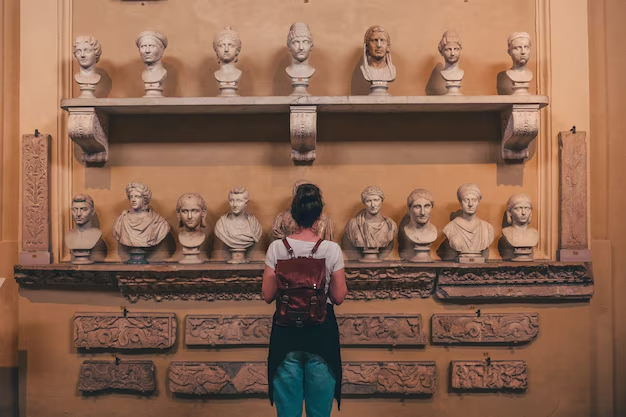Art has always been one of the most powerful expressions of human thought, emotion, and culture. Among the many forms it takes, ancient art stands as a testament to the earliest creativity and intellectual advancement of humankind. It captures the stories, beliefs, rituals, and aesthetics of civilizations long gone but never forgotten. From cave paintings and carved idols to monumental architecture and intricate pottery, ancient art provides insight into the soul of our ancestors and serves as the foundation upon which modern artistic expression is built.
This article takes you on a journey across the world to explore the origins, styles, purposes, and influence of ancient art—highlighting the contributions of some of the most remarkable ancient civilizations.
1. The Beginnings of Art: Prehistoric Art
The roots of ancient art can be traced back to prehistoric times, long before writing was invented. Prehistoric art, found in caves and rock shelters, is considered humanity’s first attempt at visual expression.
Cave Paintings
Cave art like the Lascaux Cave paintings in France (dated around 15,000–13,000 BCE) and Altamira Cave in Spain are some of the most remarkable examples. These paintings often depict animals such as bison, deer, and horses, believed to be associated with hunting rituals or spiritual beliefs.
Petroglyphs and Carvings
In addition to paintings, petroglyphs—images carved into rock surfaces—are widespread across continents. In regions such as Australia, Africa, and the Americas, these carvings document early life and serve as historical records.
Venus Figurines
Another notable example is the Venus figurines—small, stylized sculptures of female forms such as the Venus of Willendorf. These are thought to symbolize fertility, motherhood, or goddess worship.
2. Ancient Egyptian Art: Harmony and Eternity
The art of Ancient Egypt (c. 3000 BCE – 30 BCE) is perhaps one of the most instantly recognizable in the world, with its hieroglyphics, pyramids, and statues of gods and pharaohs.
Symbolism and Order
Egyptian art was deeply symbolic and followed strict conventions. Figures were shown in composite view—heads in profile while eyes and torsos were frontal. The consistent use of proportion and symmetry reflected the Egyptian emphasis on order (Ma’at) and divine harmony.
Funerary Art and Tombs
Egyptian tomb paintings and sarcophagi were crafted to ensure a safe passage to the afterlife. Massive structures like the Pyramids of Giza and the Great Sphinx exemplify how art was integrated with architecture and religion.
Papyrus Paintings and Sculpture
Papyrus scrolls with painted scenes, such as those in the Book of the Dead, also form a significant part of Egyptian artistic heritage. Likewise, statues of gods, goddesses, and royalty—carved from granite or cast in bronze—served both devotional and ceremonial functions.
3. Mesopotamian Art: The Cradle of Civilization
The civilizations of Mesopotamia—including the Sumerians, Akkadians, Babylonians, and Assyrians—created sophisticated art reflecting their complex societies and religious beliefs.
Ziggurats and Reliefs
Architecture played a central role. Ziggurats, massive stepped temples, symbolized the connection between earth and heaven. Stone reliefs depicting mythological scenes, battles, and royal processions decorated palace walls and temple facades.
Cylinder Seals
A unique Mesopotamian contribution was the cylinder seal—a small, engraved cylinder used to roll impressions onto clay tablets, often showing intricate designs of gods, animals, and rituals.
Statues and Steles
The Stele of Hammurabi, inscribed with one of the earliest legal codes, and statues of deities or kings (like the Statue of Gudea) exemplify the fusion of art with governance and law.
4. Ancient Indian Art: Spiritual and Sensuous
India’s ancient art, dating back to the Indus Valley Civilization (2600–1900 BCE), is rich in religious symbolism, intricate design, and vibrant storytelling.
Indus Valley Art
Artifacts from Mohenjo-Daro and Harappa include terracotta figurines, beads, and seals with animal motifs and script-like symbols. The famous Dancing Girl bronze statue is a remarkable early example of artistic elegance and movement.
Buddhist and Hindu Art
Later, Indian art evolved into deeply spiritual expressions under Hinduism, Buddhism, and Jainism. Temples such as Ellora and Ajanta Caves feature frescoes and rock-cut sculptures of deities and celestial beings.
Classical Indian Sculpture
Sculptural forms, like the Shiva Nataraja (Lord of Dance), illustrate dynamic movement and cosmic energy. Art was not just visual but performed through dance, music, and ritual.
5. Chinese Ancient Art: Harmony and Heritage
The art of ancient China, dating back to the Shang Dynasty (c. 1600 BCE), is characterized by elegance, balance, and reverence for nature and ancestors.
Bronze Work and Jade Carvings
Bronze vessels used in ritual ceremonies and jade artifacts (associated with purity and immortality) showcase exceptional craftsmanship. The Taotie motif, a mysterious animal mask design, often adorned these objects.
Terracotta Army
The Terracotta Army of Emperor Qin Shi Huang, with over 8,000 life-sized warriors, horses, and chariots, represents the pinnacle of ancient Chinese funerary art and military symbolism.
Calligraphy and Painting
Chinese art emphasized calligraphy—the artistic writing of characters—and ink wash painting, combining poetry, brushwork, and philosophy into a single art form.
6. Ancient Greek Art: Beauty and Humanism
Greek art (c. 800 BCE – 31 BCE) had a profound influence on Western aesthetics. It was grounded in naturalism, proportion, and the pursuit of ideal beauty.
Sculpture and the Human Form
From the rigid kouroi statues of the Archaic period to the dynamic contrapposto poses of the Classical period (e.g., Discobolus by Myron or Doryphoros by Polykleitos), Greek sculpture celebrated the perfection of the human body.
Architecture
Greek architecture, particularly temples like the Parthenon, reflected balance and harmony through the use of columns (Doric, Ionic, Corinthian) and detailed friezes.
Pottery and Mosaics
Painted vases and amphorae depict mythological stories and everyday life, while mosaic art decorated homes and public buildings with colorful, intricate patterns.
7. Roman Art: Grandeur and Realism
The Roman Empire inherited and expanded upon Greek artistic traditions, infusing them with realism, engineering prowess, and civic pride.
Portraiture
Unlike the idealized Greeks, Romans emphasized verism—realistic portrayals of individuals with all their wrinkles, scars, and age lines, especially in busts of emperors and senators.
Architecture and Engineering
Roman innovations like the arch, dome, and concrete allowed them to construct marvels such as the Colosseum, Pantheon, and aqueducts, blending utility with beauty.
Frescoes and Reliefs
Roman homes were adorned with detailed frescoes (e.g., those found in Pompeii) and bas-relief panels showcasing mythological tales, military victories, and imperial propaganda.
8. Mesoamerican and Andean Art: Myth and Monumentality
In the Americas, civilizations like the Maya, Aztec, and Inca developed artistic styles steeped in myth, cosmology, and ceremonial life.
Mayan Glyphs and Stelae
The Maya were skilled at carving intricate hieroglyphic inscriptions and constructing temples and stelae—upright stones with images of rulers and deities.
Aztec Codices and Sculptures
The Aztecs created richly illustrated codices, temple sculptures, and ceremonial masks, often depicting gods like Quetzalcoatl and Huitzilopochtli.
Incan Architecture and Textiles
The Inca are renowned for their stone masonry (e.g., Machu Picchu) and elaborate textile art, which held ceremonial and political significance.
The Legacy of Ancient Art
The influence of ancient art is immense and enduring. Its forms, motifs, and philosophies continue to inspire contemporary artists, architects, and designers. More importantly, ancient art connects us to our collective human heritage—it tells the stories of those who came before us and invites us to reflect on the enduring power of creativity.
As we uncover more through archaeology and preservation efforts, ancient art keeps revealing its secrets—reminding us that while civilizations rise and fall, art remains eternal.





